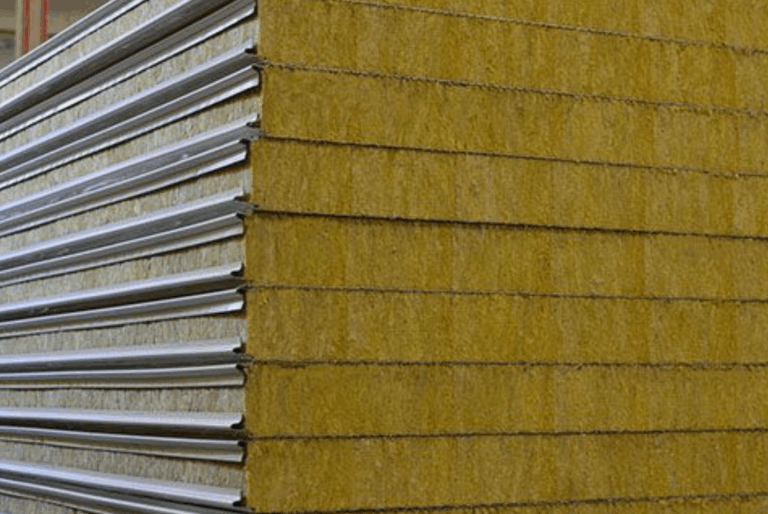Overview of structural insulated panels (SIPs)
Structural Insulated Panels (SIPs) are advanced building materials designed to enhance the performance, efficiency, and sustainability of construction projects. At their core, SIPs consist of a layer of insulating foam sandwiched between two structural facings, typically made from oriented strand board (OSB) or plywood. This construction method provides a high level of thermal insulation and structural strength, making SIPs an excellent choice for both residential and industrial applications.
Definition and core features of SIPs
SIPs are prefabricated panels used in various building systems, including walls, roofs, and floors. The primary feature of SIPs is their insulation core, which is usually made of expanded polystyrene (EPS), extruded polystyrene (XPS), or polyisocyanurate (PIR) foam. These materials provide excellent thermal resistance, indicated by high R-values, which measure the panel’s ability to resist heat flow. The outer layers of SIPs, often made of plywood or OSB, give the panels their structural integrity and load-bearing capacity.
Key differences between SIPs and traditional construction materials
Unlike traditional construction methods, which typically use wood studs or metal frames combined with insulation and drywall, SIPs integrate both structural and insulating properties into a single panel. This results in several advantages:
- Reduced thermal bridging: SIPs minimize gaps and leaks, improving energy efficiency.
- Enhanced structural strength: The continuous nature of SIPs provides a stronger and more stable building envelope.
- Faster construction: Pre-fabricated SIPs can be quickly assembled on-site, reducing labor time and costs.
Benefits of using SIPs in industrial settings
Energy efficiency and thermal insulation performance
One of the most significant benefits of SIPs is their superior energy efficiency. The high R-values of SIPs ensure excellent thermal insulation, which helps to maintain consistent indoor temperatures and reduce energy consumption for heating and cooling. This is particularly advantageous in industrial settings where maintaining optimal temperature conditions can impact product quality and operational costs.
Cost efficiency and long-term savings
Although SIPs may have a higher initial cost compared to traditional building materials, their long-term benefits often outweigh the upfront investment. The improved insulation leads to lower energy bills, and the durability of SIPs reduces maintenance and repair costs over time. Additionally, the faster construction process can lead to significant labor cost savings.
Environmental sustainability and eco-friendly attributes
SIPs contribute to sustainable construction practices by enhancing energy efficiency and reducing the environmental footprint of buildings. Many SIP manufacturers use recycled materials in their products, and the reduced energy consumption associated with SIPs helps lower greenhouse gas emissions. For businesses committed to green building practices, SIPs offer a viable solution.
Enhancing health and indoor air quality
The airtight nature of SIPs not only improves energy efficiency but also contributes to better indoor air quality. By minimizing air leaks and drafts, SIPs help to control humidity levels and reduce the risk of mold growth. This creates a healthier indoor environment for workers and can contribute to overall workplace wellness.
Technical specifications and components of SIPs
Understanding R-values and thermal resistance in SIPs
The R-value of SIPs is a critical factor in determining their effectiveness as an insulating material. Higher R-values indicate better thermal resistance, which translates into improved energy efficiency. For industrial applications, selecting SIPs with appropriate R-values is essential to meet specific performance requirements and building codes.
Common materials used in SIPs: Foam core and plywood facings
The foam core of SIPs is responsible for their thermal insulation properties, while the plywood or OSB facings provide structural strength. The choice of materials can affect the overall performance of SIPs, with different types of foam offering varying levels of insulation and durability. Plywood and OSB facings also contribute to the panel’s load-bearing capacity and resistance to environmental factors.
Structural integrity and load-bearing capacities
SIPs are designed to provide both insulation and structural support, making them suitable for a wide range of applications. The load-bearing capacities of SIPs depend on factors such as panel thickness, foam core density, and facing materials. For industrial projects, it’s important to work with experts to ensure that SIPs meet the required structural specifications.
Applications of SIPs in industrial projects
Design and construction of industrial buildings and warehouses
SIPs are increasingly used in the design and construction of industrial buildings, including warehouses, manufacturing facilities, and distribution centers. Their ability to provide both insulation and structural support makes them ideal for large-scale industrial applications, where energy efficiency and durability are crucial.
Manufacturing facilities and custom industrial structures
For custom industrial projects, SIPs offer flexibility in design and construction. Their prefabricated nature allows for quick assembly and customization, making them a popular choice for specialized manufacturing facilities and unique building designs.
Flexibility in design and adaptability to various uses
One of the key advantages of SIPs is their design flexibility. They can be easily adapted to meet specific project requirements and used in various building systems, including modular and prefabricated structures. This adaptability makes SIPs a versatile choice for a range of industrial applications.
Installation and maintenance considerations for SIPs
Installation process: Best practices and common challenges
The installation of SIPs requires careful planning and execution to ensure optimal performance. Best practices include proper handling and storage of panels, accurate site measurements, and secure panel connections. Common challenges during installation can include alignment issues and sealing gaps, which can impact the overall effectiveness of SIPs.
Maintenance tips and ensuring long-term durability
SIPs are generally low-maintenance, but regular inspections and maintenance are essential to ensure their longevity. This includes checking for any signs of damage or wear and addressing any issues promptly to prevent more significant problems.
Troubleshooting and expert recommendations
Working with SIP experts can help address any installation or maintenance issues that arise. Their knowledge and experience can provide valuable insights and solutions to ensure that SIPs perform effectively throughout their lifespan.
Industry trends and innovations in SIP technology
Latest advancements in SIP technology
The SIP industry is continuously evolving, with ongoing research and development leading to new innovations. Recent advancements include improved foam core materials, enhanced facing options, and advancements in manufacturing processes. Staying informed about these developments can help businesses make informed decisions about using SIPs in their projects.
The future of SIPs in industrial construction
As the demand for energy-efficient and sustainable building solutions grows, SIPs are expected to play an increasingly significant role in industrial construction. Their benefits in terms of performance, cost-efficiency, and environmental impact make them a promising choice for future projects.
Case studies and real-world examples
Successful industrial projects utilizing SIPs
Numerous industrial projects have successfully utilized SIPs, demonstrating their effectiveness and versatility. Case studies can provide valuable insights into the practical applications of SIPs and offer inspiration for future projects.
Insights and lessons learned from industry professionals
Industry professionals who have worked with SIPs can offer valuable lessons and recommendations based on their experiences. Their insights can help guide businesses in making the most of SIP technology in their industrial applications.
Conclusion
Recap of the advantages and applications of SIPs in industrial settings
Structural Insulated Panels (SIPs) offer numerous advantages for industrial applications, including energy efficiency, cost savings, and environmental sustainability. Their versatility and performance make them a valuable choice for a wide range of industrial projects.
Looking ahead: The evolving role of SIPs in the industry
As the construction industry continues to prioritize energy efficiency and sustainable practices, SIPs are likely to become even more prominent in industrial settings. By staying informed about the latest advancements and trends, businesses can leverage SIP technology to enhance their projects and achieve their goals.





